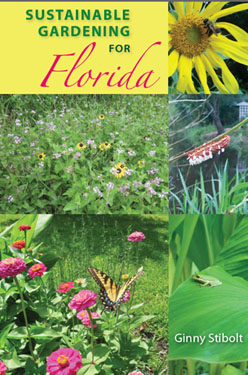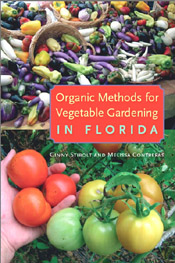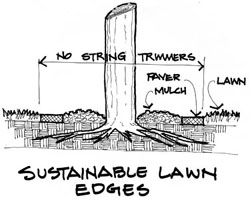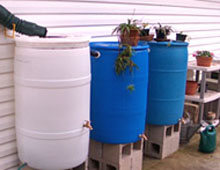Sustainable
Gardening for Florida
|
|||||||||||||||||||||||||||||
|
50% of
royalties from sales of this book will be paid directly |
|
|
Nominated for 2009 American Horticultural Society's "Book of the Year" Award Reviews,
articles, and comments about: |
|
|
|
Ginny's second Florida gardening book "Organic Methods for Growing Vegetables in Florida" was written with Melissa Contreras, founder of the Urban Oasis Project in Miami. This book, which was published in 2013, includes the details of growing vegetables organically, recipes for some of the unusual crops, safe harvesting methods, and ideas about how to grow your gardening skills outside your garden gate. See more details on its website. This book, also published by UPF, is available at Amazon.com or University Press of Florida. |
||

In 2015, Ginny's third book "The Art of Maintaining a Florida Native Landscape" was published by University Press of Florida. This book answers the question, "And then what?" which is often asked after people decide to use more native plants in their urban/suburban properties. The beautiful cover photo features a Pinxter azalea (Rhododendron canescens), which is growing in Ginny's front yard. This area used to be lawn. The path runs along a pond edge and a combination of meadow and woods have replaced the turfgrass. |
||
Sustainable Gardening for Florida Resources:
Each chapter lists resources for additional information. Since
many of these references are online, and because new information may
become available, I've provided this online reference for easy
access and to keep you up-to-date. Please let me know if you
find a non-working link.
Chapter Titles: (Click a link for the resources for each chapter.)
|
1. |
8. |
||
|
2. |
9. |
||
|
3. |
10. |
||
|
4. |
11. |
||
|
5. |
12. |
||
|
6. |
13. |
Waterfront Gardening: Dealing with Salt, Sand, Muck, and Erosion |
|
|
7. |
14. |
Back cover copy:
Florida's warm climate and alternating wet and dry seasons provide both challenges and opportunities for home gardeners and property managers. Unfortunately, when local conditions are not taken into account, gardening can have a negative ecological impact. In Sustainable Gardening for Florida, Ginny Stibolt presents easy, money-saving projects that help to reduce Floridians? collective ecological footprint.
Stibolt draws upon a lifetime of experience and her academic training to give practical, hands-on tips for anyone interested in starting or expanding a garden. She teaches you how to design an ecologically friendly garden, enrich your soil with compost, and grow a more sustainable lawn. Other topics include maintaining a garden using native plants and natural methods, pest management, and even irrigation ideas to drought-proof your landscape. This wide range of techniques features a combination of eco-friendly landscape design and organic practices. Stibolt offers fresh ideas and new ways of approaching common environmental subjects for both individuals and communities. This is a guidebook to making a positive environmental impact on the state, one property at a time. Accessible to beginning gardeners, there?s enough information here to keep experts busy as well.
|
|
Ginny Stibolt moved to northeastern Florida in 2004 and even though she's a botanist and lifelong gardener, Florida gardening was a shock. She started writing The Adventures of a Transplanted Gardener columns for the Times Union newspaper in Jacksonville. Now she's written three Florida garden books published by University Press of Florida: Sustainable Gardening for Florida, 2009; Organic Methods for Vegetable Gardening in Florida with Melissa Contreras, 2013, and The Art of Maintaining a Florida Native Landscape, 2015. Check out her blog for the latest news and articles: www.GreenGardeningMatters.com
|
|
|
|
Drawings:
I worked with John Markowski, a friend, architect, artist, and gardener,
to draw diagrams to illustrate various topics for the book.
My feeling is that sometimes a line drawing can more clearly illustrate
a point than photos and words.
Photographs:
In addition to the drawings and black & white photos within the
text, there are eight pages of color plates in the centerfold.
I've been illustrating my gardening projects with color photos
since 2004 and have been taking pictures of gardens and natural landscapes
throughout Florida. Here are some samples included in the book:
(Click here for all the photos.)
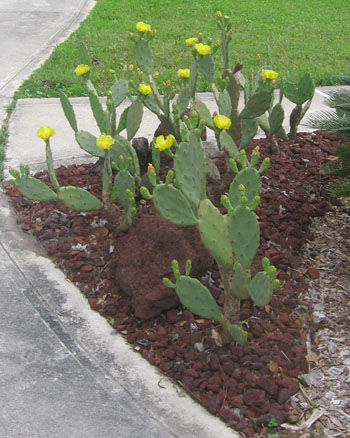 |
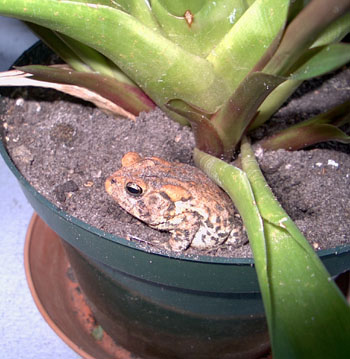
Habitat for predators of bugs is an important part of integrated pest management. |
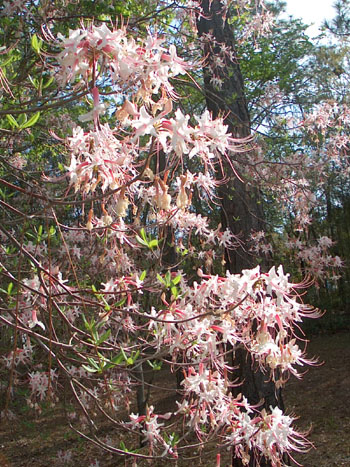 |
|
Native prickly pears love this hot dry microclimate. |
The delicate blooms of our native azalea grace this woodland garden. |
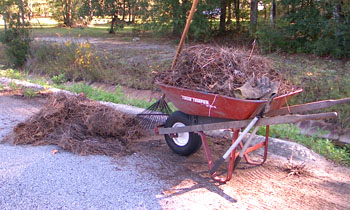 |
|
Free mulch from the road is good for the garden |
|
|
|
Rain barrels help save Florida's water. |
|
|
|
Order your copy today! |
Sustainable
Gardening for Florida
on Facebook
Become a fan of the "Sustainable Gardening for Florida" FaceBook page to participate in discussions on topics ranging from rain gardens to hurricane-scaping, and receive updates.
Reviews
|
?Brings important environmentally friendly gardening information together in one comprehensive reference. Will be of interest to environmentally sensitive gardeners and homeowners, landscape architects, landscapers, nursery owners, wholesale and retail growers, land managers, park managers, and more.??Gil Nelson, author of Florida?s Best Native Landscape Plants |
|
?Tells us how to manage our gardens, yards, landscapes, and water with the least possible adverse impacts on the environment. It explains why sustainability is important in a crowded world, and how we can use basic ecological principles to live with, not against, nature.??Stephen P. Christman, Biological Research Associates |
|
"Ginny Stibolt doesn't beat around the bush. Her opening sentence in "Sustainable Gardening for Florida" reads: 'This is not an armchair or coffee table gardening book; it's a let's-work-together action book . . .'" "It's a workbook full of insightful details about complementing Mother Nature's sometimes moody ways. Keep in mind that this is an educational adventure, not a quick read. Consider it a detailed reference book for helping take care of the planet -- one piece of property at a time" ?Review by Karen Gallagher in The Daytona Beach News Journal full review |
|
"If you?re spending too much money and time on your garden, Ginny Stibolt has solutions. She also has answers to other challenges that frustrate Florida gardeners, and that have a negative environmental impact." "Newcomers to the state typically encounter problems, Stibolt said. 'When I moved here from Maryland five years ago, I realized that gardening is different. Many of us want plants that we are comfortable with, but we should be growing those that are comfortable with our climate, and that can survive our wet and dry seasons. That means more native plants.'? ?Interview by Peter Pringle in the Treasure Coast Palm full interview |
|
"Sustainable Gardening for Florida is one of the best summaries of sustainable practice in our gardens that I have ever seen. With the qualification that specific plants and several garden situations may be appropriate only for Florida, the principles of sustainability presented in this book can be applied by gardeners everywhere. "Ginny Stibolt has spent years researching this book, and she has presented this excellent information in the form of a ?cookbook,? where you can take your favorite ?recipe? and put it into immediate practice." ?Review by Carole Brown of Ecosystem Gardening blog full review |
|
"Although the author's obvious mission is to mitigate the environmental degradation that too often is a consequence of uninformed landscaping choices, Stibolt's advice and instructions also make gardening easier, safer and more satisfying. "Whether plant lovers are selecting and installing trees, building water gardens or starting a compost pile, "Sustainable Gardening for Florida'' supplies the information and suggestions that can assist them." ?Review by Charles Reynolds of The Ledger full review |
|
"I had the good fortune to meet the author
of this book, Ginny Stibolt, at the Ethnobotanical Day held
at Heathcote Gardens last weekend, and I am so glad I did!
I have a whole shelf full of books on gardening in Florida,
and I might not have purchased this one without the opportunity
to preview it. Sustainable Gardening for Florida definitely
deserves a place on my shelf, and I highly recommend it for
yours, too. ?Review by Sue Dingwell of the Clean Green Natives blog full review |
|
"Green Books Make Great Gifts Books with a green slant make perfect Christmas gifts. ..." "A good choice for the gardener in the family is the just-released "Sustainable Gardening for Florida" by Ginny Stibolt. A botanist and northern transplant, Ginny has been a gardener all her life. The book tells how to work with nature rather than against it by managing our lawns and gardens without adverse impact on the environment. ..." Recommendation by Donna Meredith of the Tallahassee Book Festival in The Tallahassee Democrat full list |
|
"Stibolt, a botanist who writes about Florida gardening for different publications, describes how gardeners in Florida can use sustainable practices to reduce their ecological impact. She discusses garden design, composting, growing a sustainable lawn, using native plants and natural methods, pest management, working with different habitats, trees and shrubs, irrigation, harvesting rainwater, and container, waterfront, and edible gardening. She also details rain gardens, bioswales, and bog gardens, and preparing for disasters. " (Annotation ?2009 Book News Inc. Portland, OR (concise coverage of scholarly, reference, & sci-tech-med books)) |
|
"Following the advice of Sustainable Gardening
for Florida, we completely reworked our grass centric yard
to one with reduced grass and many beautiful, native and tropical
plants. As a result, the need to water our yard has been much
reduced which is good for our pocket book and necessary since
much of Florida has restrictions on watering. A review on Amazon.com |
|
"If you live in Florida and are planning to start growing your own food, Sustainable Gardening for Florida should be your first purchase. This book provides a wealth of environmentally friendly gardening information for both the beginner and for experienced gardeners." Endorsed by Organic Lifestyle Magazine Here's the link |
|
"... provides Florida gardeners with an in-depth guide to designing and maintaining a garden in ways that limit the impact on the environment and make the most of available resources. One of the techniques she discusses is making compost bins out of readily available materials and using compost and compost teas to amend the soil. Managing smaller and more sustainable lawns, choosing native plants that are well-suited to their environment, and using cultural and preventive measures to control pests are just a few of the other strategies Stibolt covers. Each chapter lists additional online and printed resources and provides hand-drawn sketches that help to clarify the text. Review in The American Gardener Magazine Here is the link |
|
"This is THE book for the person who is sincere in wanting the plants in their yard, or porch or balcony, to be part of supporting and protecting Florida?s native diversity. As stated in the preface, this is a "let?s-work-together action book" for Florida gardeners. A sound investment! It?s organized similar to a cookbook, with enough detail to give step-by-step instructions, but also to educate and allow individual gardeners to adjust "recipes" to suit their needs. ... Review by Rosalind Rowe in FNPS's Sabal Minor Here is the link |
|
"Since moving to FL from CA, I have checked
out more than 20 books from the library on this state's
unique requirements. After checking it out again and again
from the library, I decided I needed to support this writer
and purchase the book. This is the first one I'm buying
and is at the top of my "Must Buy" list. It's
a book I know I'll refer to repeatedly as I'm establishing
and maintaining my garden here in Florida. Amazon reviewer K. Rowan Here is the link |
~ ~ ~ ~ ~
Transplanted Gardener Home ![]() Transplanted
Gardener Articles
Transplanted
Gardener Articles ![]() About Ginny Stibolt
About Ginny Stibolt
![]() Appearances
Appearances
? Sky-Bolt Enterprises 2001-2011
This webpage was designed and is maintained by www.sky-bolt.com
Sustainable
Gardening' a lesson in taking care of Earth one plot at a time
By KAREN GALLAGHER
Staff Writer
Ginny Stibolt doesn't beat around the bush. Her opening sentence in "Sustainable Gardening for Florida" reads: "This is not an armchair or coffee table gardening book; it's a let's-work-together action book . . ."
Stibolt is a naturalist with a master's degree in botany, and she writes from experience and from the heart about making our environment as beautiful and naturally sustainable as possible.
And just what is sustainable gardening? You'll have to read Chapter 1 to learn ALL the details, but you'll find out Stibolt believes we should all be "moving toward sustainability in managing your landscape" and that it "can happen with bold, sweeping changes or with small steps." That's her way of winning the reader over to follow her very do-able practices. After all, this is a 265-page book of 14 chapters. In addition, there are a 17-page glossary, a 28-page plant list and a comprehensive 10-page index.
Whether you have a balcony, a 10-foot-by-10-foot patch of green split by a sidewalk or massive acreage of lawn and trees, this book will open your eyes to wonderful ideas for helping the environment.
At the end of each chapter, Stibolt offers a list of Web sites and books for further research or reading. "Sustainable Gardening" also includes informative charts, boxes and drawings, as well as a 16-page section of color photographs showing some of the diversity of Florida landscapes which serve as a mini-lesson in pictures.
It's a workbook full of insightful details about complementing Mother Nature's sometimes moody ways. Keep in mind that this is an educational adventure, not a quick read. Consider it a detailed reference book for helping take care of the planet -- one piece of property at a time.
For
detailed resources Stibolt covers in her book, visit sustainablegardening4florida.com
.
"Sustainable Gardening for Florida," by Ginny Stibolt with
illustrations by John Markowski, University Press of Florida, 272
pages, $24.95, softcover
Sustainable
Gardening in 8 Complex Steps
? 1. Having minimal impact on the environment
? 2. Making the best of available resources
? 3. Saving time and money
? 4. Reducing carbon dioxide and increase oxygen in the air
? 5. Offsetting some of the heat absorbed and stored by buildings
and roads
? 6. Increasing habitat for wildlife
? 7. Preventing damage to underground infrastructure
? 8. Preparing for hurricanes, fires and drought
Botanist Ginny Stibolt has
environmentally friendly answers
to gardeners' questions
|
VERO BEACH ?If you?re spending too much money and time on your garden, Ginny Stibolt has solutions. She also has answers to other challenges that frustrate Florida gardeners, and that have a negative environmental impact. The naturalist and botanist presents them in ?Sustainable Gardening for Florida,? an illustrated reference guide for gardeners, landscapers and property managers. She?ll discuss the book and sign copies at 1 p.m. Saturday at the Vero Beach Book Center. ?Doing what?s always been done or what the neighbors do are not necessarily the best ways to achieve success,? she said. ?Even professional landscapers engage in practices that are unwise and environmentally damaging.? The book offers practical, hands-on tips for dealing with Florida?s warm climate and alternating wet and dry seasons. ?What works in one part of the state may not work in another because of differences in temperature, rainfall and soil types,? she said. ?If we ignore those differences, failure is inevitable.? One money-saving technique she suggests is to reduce lawn size. ?People are spending too much money on watering, and that is putting a strain on the aquifers.? Another is to eliminate the use of lawn chemicals. ?They are bad for people, pets and the environment in general. ?We?re spending too much money poisoning the landscape. We should be treating it more organically so that creatures living in it can continue to live.? Stibolt brands as a myth the notion that mulch around tree trunks ? a practice called ?volcano mulching? ? is beneficial. ?It?s harmful,? she said. ?It sheds water away from the tree, and can result in the rotting of the trunk.? She also dismisses the belief that covering the bottom of a planting container with gravel aids drainage. ?Water is impeded if it tries to travel from a fine potting mix to a coarse gravel mixture.? To enrich the soil, she advocates the use of compost. ?Instead of throwing everything away, we can put weeds, dead leaves and even kitchen scraps into a compost pile to produce wonderful fertilizer,? she said. ?It?s best to create the pile in layers. Start with brown, such as dead leaves, then green, like freshly picked weeds, and then add two shovels of good garden soil or manure. To prevent the pile from drying out, keep it covered with pine needles.? Newcomers to the state typically encounter problems, Stibolt said. ?When I moved here from Maryland five years ago, I realized that gardening is different. Many of us want plants that we are comfortable with, but we should be growing those that are comfortable with our climate, and that can survive our wet and dry seasons. That means more native plants.? Stibolt will donate half of all royalties from sales of the book to the Florida Chapter of the Nature Conservancy. ?The conservancy is preserving land in Florida. By sharing royalties with the organization, I?m saying ?This is important to me.? ?I want Florida to be better off, and Florida gardeners to have better experiences.?
|
